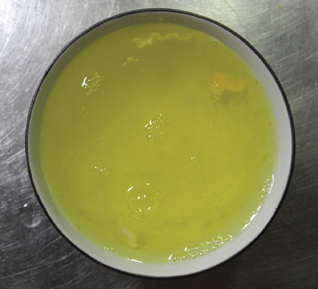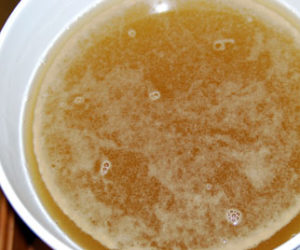
Ever make a wine that had excessive tannins, causing it to taste overly astringent or bitter? Don’t worry, there’s an easy solution the next time you go to make the same wine: Fining. In the February-March 2014 issue of WineMaker, Bob Peak covered all of the fining agents frequently used by winemakers. But one of those options — egg whites — always seems to attract a lot of questions from new winemakers.
Egg whites are one of the fining agents specifically used for tannin removal. Using egg whites to remove harsh tannins is an ancient tradition from Burgundy that is still used worldwide by hobby winemakers and commercial producers alike. Some winemakers prefer egg whites to other fining additives because it’s gentler on the wine than many of the other options that have a tendency of stripping color and other desired characters from wines. While egg whites bind and precipitate the harsh tannins, they leave behind the softer, more desirable tannins that you wantin your wine.
Egg white fining is most commonly used in highly tannic red wines and wines aged in a barrel, but is sometimes used in highly tannic fruit wines as
well. The need for egg whites in white wines would be rare as these wines are naturally full of proteins and contain very little tannins.
The active ingredient in egg whites is protein albumin, which attaches to tannins through an electric charge and then drops out of the wine. After one to four weeks, the wine is racked off the sediment, leaving behind the phenolic substances and protein from the egg whites.
Egg white fining is a simple process. First, separate the egg whites from the yoke and prepare a solution of egg whites, a couple mL of water, and a pinch of salt. The salt is added to prevent the solution from getting cloudy and to dissolve the globular proteins from the egg. If you want to save yourself the chore of separating the whites, you can also use the refrigerated egg whites that come in a carton at the grocery store. Gently whisk the ingredients to make a liquid solution. Be sure not to beat it excessively — you don’t want it to froth and whip up a meringue! Then pour the egg whites into your wine vessel and stir gently. Allow the egg whites a minimum of a week in the wine to settle out. Once the egg whites have settled, carefully rack the wine into another container, leaving the sediment behind.
How much egg white you want to add depends on how excessive the tannins you are looking to strip are and the taste you are going for, but additions of 0.5 to 1 mL per gallon of wine prior to bottling is common when dealing with an astringent red. If you have not tried egg white fining before, this sounds like a perfect opportunity to perform some bench trials to see what rate of addition you prefer!
One concern that is raised from time to time is whether there is any danger in putting raw egg in your wine — and with fears of salmonella poisoning, the question is a good one — but the fact is that the high alcohol and low pH in your wine will kill any human pathogens the egg may contain. So, go ahead and fine with egg whites without fear. (Drinking a raw egg smoothie each morning like Rocky Balboa, on the other hand, cannot be endorsed by the editors of WineMaker.)






